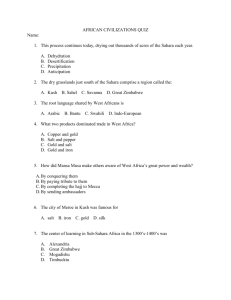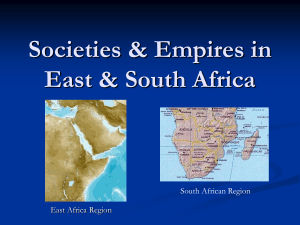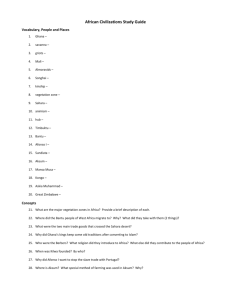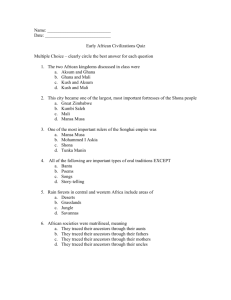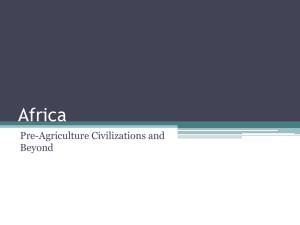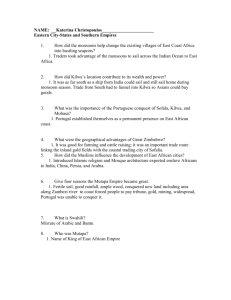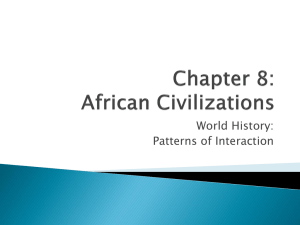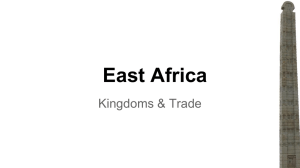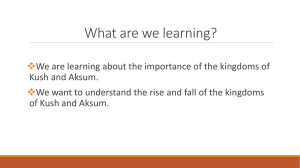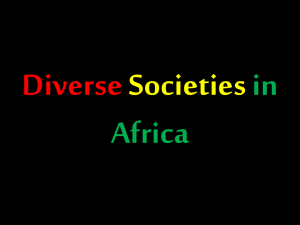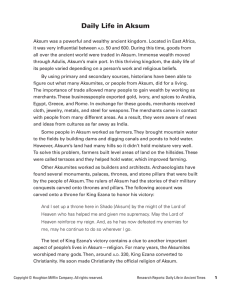EAST AFRICA
advertisement
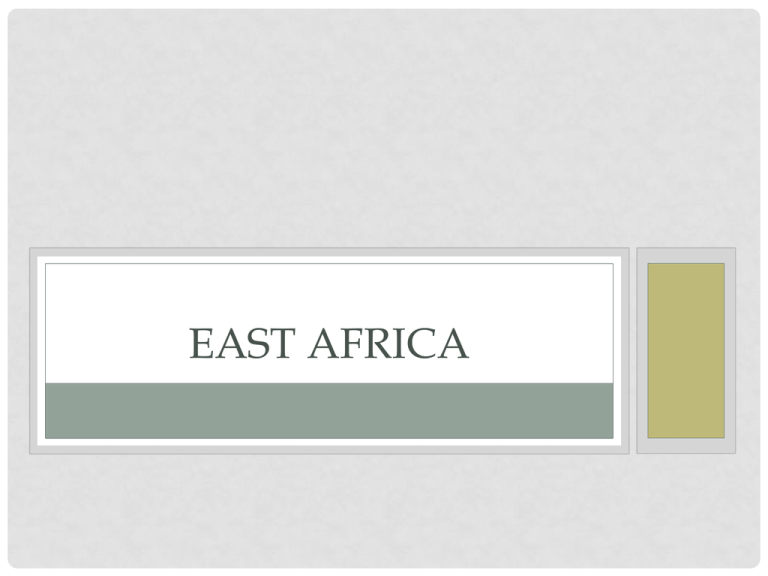
EAST AFRICA AGENDA • Bell Ringer: What is the impact of Mansa Musa and his pilgrimage to Mecca? 1. Lecture: East Africa and Islamic Trade 2. Image Interpretation: Kilwa 3. Discussion, Oral Traditions and the Reliability of Historical Interpretation. 4. Video Analysis: The Swahili Coast. 5. Discussion, the Architecture of Gede. 6. East Africa Trade: Primary Source 7. HW: KUSH, CONTINUED • 710 B.C. They conquer upper Egypt. • Meroe is the center of ironworking. • 671 B.C. taken by Assyrians. • Height of power 250 B.C. – 150 A.D. KUSH AT THE HEIGHT OF POWER • Impressive pyramids, temples. • Written language developed. • Decline • Lack of fertile land. • Lost control of trade routes with Aksum. AKSUM • 350 A.D. – King Ezana of Aksum takes power, conquers Kush. • Many cultures had ancestor worship, King Ezana converted his people to Christianity. • Laid foundations for Ethiopian church. • Prospered from 300-600 A.D. DECLINE OF AKSUM • Environment declines – Erosion from deforestation – Land loses nutrients. • Persians – Gained control of Red Sea. • Islam – Competition with Aksum, they lose control of major trade routes. INCREASE IN TRADE • Spread of Islam leads to increased trade. • 700 A.D. – 1300 A.D. • To get the big bucks, people moved to Africa. • Muslims moved to East coast. • Indonesians moved to Madagascar. KILWA • 1200 A.D. Kilwa becomes leading trading port • East African coast flourishes. • Islamic traders praised Kilwa as the most beautiful cities in the world.
